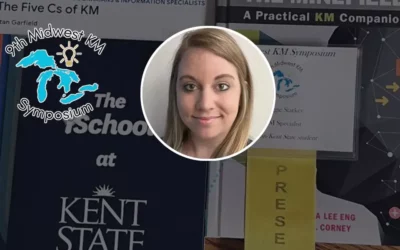Are You Getting What You Need from Your Knowledge Portal?
Phil Green
Knowledge portals are easy to describe, but tricky to get right. To my mind a knowledge portal should accomplish two key things: first, enable users to find the information they seek quickly and efficiently (more on “find” later) and second, facilitate the ongoing capture of information and knowledge so that the portal helps users with that “finding.”
Seth Earley has written eloquently about Knowledge Portals in his piece “Why the Timing is Right for Knowledge Management Portals.” He got me thinking about what makes knowledge portals work and what makes them miss the mark.
First, let’s look at what Seth describes as a common problem with many knowledge portals – “Easy Access to Bad Data.” This syndrome is a very common problem, as KM initiatives often start with the recognition that an organization’s documents are disorganized and thus it’s hard to find the right stuff. A common IT-centric answer to basic information disorganization is to put a search engine in place. But if the underlying data remains in disarray, then this is like putting sauce on a plate of spaghetti. It may look better, but underneath it’s still a mess.
In this scenario you simply shift looking through the shared drive to looking through search results. Remember, a search engine sorts by relevance, but that’s not the same as quality.
For example, if you are looking for a specific project report and the search engine finds 4 copies, how can you tell which is the final report published by Marketing, which one is the bootlegged revision done by Sales (with bogus data throughout), which one is the final draft (but missing key edits) and which one is the copy your CEO passed on to the Board (but with key redactions)?
To solve this type of problem, as Seth points out, “the underlying content still needs to be curated.” Simply put, outdated content needs to be deleted and erroneous information eliminated. But can your knowledge portal help you accomplish this? It can if the knowledge portal enables information to be enhanced and informed by community input. By enabling users to comment, tag, and rate content, outdated and erroneous information can be flagged for curation, and the content administrator can hide or delete “bad data”. In addition, the social information can refer users to other relevant content faster (e.g. with ratings).
Now let’s turn to the issue of how knowledge portals help users “find” information. The first issue to be tackled in information discovery is – do you have access to the all the information you require? As Seth notes, “Knowledge management portals provide ready access to people, expertise, communities, collaborative content, structured data and rich media such as images and video.” It is critical that your knowledge portal provide what I refer to as a 360 degree view of the information that you need. Otherwise, users have to visit many different silos, which is clearly very inefficient.
Providing a 360 degree view of your information has three key dimensions:
- As Seth notes this means access to both structured and unstructured information (e.g. structured like accounting data and unstructured like documents and video).
- It also means connections to people and experts who can provide you with advice and assistance.
- Lastly, it means access to external data as well. For example, most organizations we work with use external subscription databases. Does your Knowledge Portal make access to that external information easy and seamless? If not, it should.
The key is providing the closest thing possible to a one stop shop for your users’ information needs, and thereby dramatically increasing the efficiency with which they find information. (A Lucidea client reported a $200,000 “year one” savings in time spent looking for information after implementing a revamped knowledge portal.)
When thinking through how to help users find information, remember that “find” is way more than just search. As Seth notes, “A knowledge management portal with the correct information architecture allows users to both search and browse.” Both kinds of information discovery are critical, and I would add a third: push. A properly configured knowledge portal should push information on topics of interest directly to users’ desktops and mobile devices via email, RSS or other push technologies. This means that users can choose to spend zero time seeking information, and instead have it delivered directly to their desktops in real time or once a day.
Does your knowledge portal provide access to all the information your users need, and enable multiple forms of information discovery that help them find the right information at the right time?
Similar Posts
Lucidea’s Lens: Knowledge Management Thought Leaders Part 38 – Elizabeth Lank
KM thought leader Elizabeth Lank helped organizations improve effectiveness through greater cross-boundary collaboration and knowledge sharing.
9th Annual Midwest KM Symposium: Part 8 – Linda Lavelle
KM expert Stan Garfield gives overview of presentation by Linda Lavelle Knowledge Management and Innovation: Partnering to Create Impact
9th Annual Midwest KM Symposium: Part 7 – Maggie Starkey
KM expert Stan Garfield gives overview of presentation by Maggie Starkey, How to Make KM Stick: Steps to Achieving a Knowledge Sharing Culture
9th Annual Midwest KM Symposium: Part 6 – Rachel Teague
KM expert Stan Garfield gives overview of presentation by KM expert Rachel Teague, Applying Knowledge Transfer: Real Life Tools in Real Life Examples
Hosting service
Enjoy all of the benefits of your Lucidea solution with secure, reliable, stress free hosting
Programs & incentives
No matter your size or budget, we’ve got you covered, today and tomorrow



